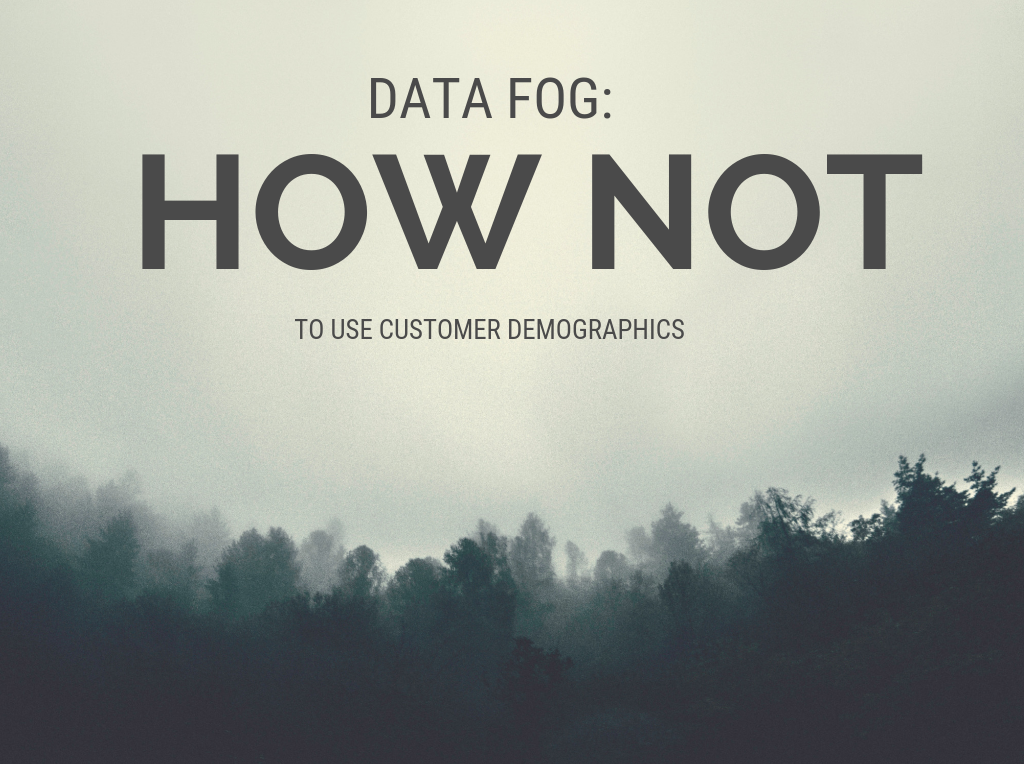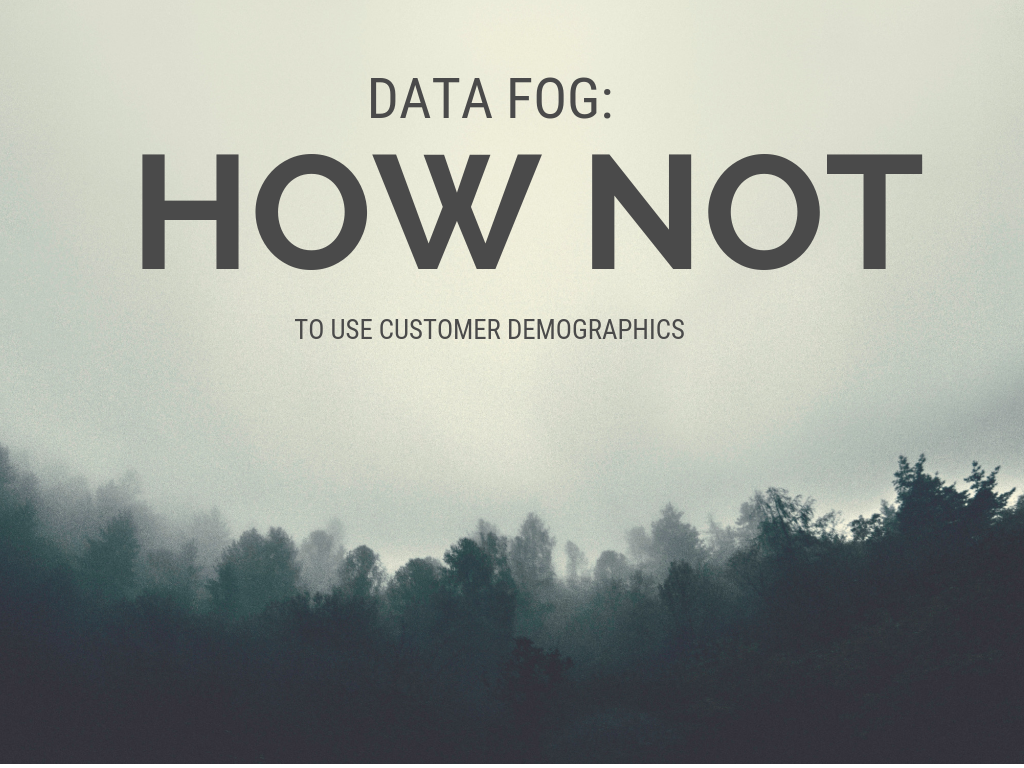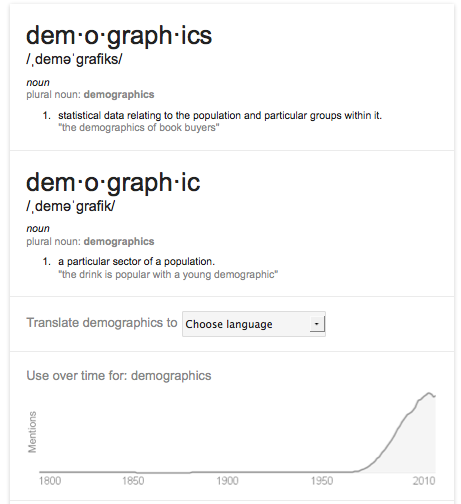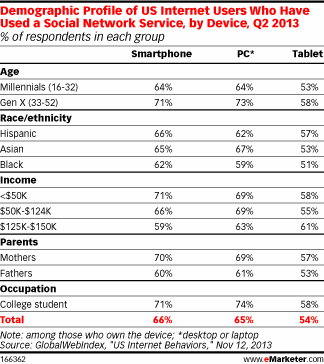How to Use Your Core Values to Inspire, Retain, and Energize Your Team
For the last few decades, but especially so in recent years, people are seeking out more than just an income from their place of employment. More...


Yes, you read that correctly: How NOT to use customer demographics in your marketing. In an attempt to make research-based marketing decisions, many small businesses and nonprofits rely too heavily on the copious, free demographic data available today. Relying on numbers without context obscures your view because it invites misleading conclusions and implicit bias. Let’s look at two examples that illustrate the 'data fog' problem, as well as tips to avoid making faulty demographic assumptions about your customers, prospects and communities.
The Google trend line for the increased use of the term “demographics” over the past 50 years is dramatic. A term once used only by professional researchers in government, policy, and large consumer product goods companies, has become commonplace.

Today you are urged to remember that “buyers are people too,” and thus customer and prospect demographics should be relevant for every size and type of organization. But I find many smaller organizations, if not most of them, live in an environment with relatively sparse affordable data for narrow B2B industry sectors, niche nonprofit or advocacy markets, highly specialized or concentrated markets, and so forth. (Many of our change marketing clients work in such markets.)
Surrounded by free 'facts' and statistics on age, ethnic origin and geographic region, it is far too easy to succumb to the pressure to present ‘research-based recommendations’ and simply insert the demographic data you have available, skimming over an important qualifying statement such as “Millennials are more likely to,” or failing to parse through the implications of “Forty percent of Boomers do such and such.” For me, two common experiences highlight the risks of generalizing from demographic data.
Millennials this, millennials that… Capturing new, younger buyers, customers, voters, or contributors is a matter of survival and near obsession in many circles. This has lead to a set of unquestioned characteristics and behaviors based solely on age. (Think of how often you’ve heard “computer savvy” or “smartphone” in the same sentence as “young people.”) The risks here are ignoring younger people who are less comfortable with technology, as well as those older people who are. Marketers who thought they could safely ignore social networks or mobile advertising because their community skews older saw a wake-up call from emarketer.com: “Rates of smartphone vs. PC usage the same regardless of demo group.”

Another readily available but misleading demographic characteristic when used in isolation is geography, especially the classification “rural versus urban.” In Vermont – one of the country’s most rural states -- it can be convenient to discredit unfamiliar communication strategies or media channels as “only working in urban areas” or “only working for large city restaurants.” I heard such statements most recently from a retailer and from a nonprofit organization. Looking at location-based services and monitoring tools such as Google, Yelp, Facebook, and Twitter, it is easy to find the risks in using such a single factor without context.
It’s hardly news that you want to avoid generalizing about your audience based on an isolated demographic factor. What’s new is the ready availability of such information and the pressure you may feel to use it. In future posts I will dive deeper into this subject, but meanwhile here are three tips to help you changemakers lead a concerted effort to make better use of the data that is available to you (imperfect as it may be) or to use low-cost ways to create new data.
No single data point guarantees success. But adding context to get a clearer picture of who connects with your organization, and why, will substantially increase your odds.
------
Photo by Simone Dalmeri on Unsplash
Editor's Note: This post originally appeared in December 2013 and has been updated for accuracy and comprehensiveness.
The Change Conversations blog is where changemakers find inspiration and insights on the power of mission-driven communication to create the change you want to see.
© 2009- to present, Marketing Partners, Inc. Content on the Change Conversations blog is licensed under a Creative Commons Attribution-Noncommercial-NoDerivs 3.0 United States License to share as much as you like. Please attribute to Change Conversations and link to ChangeConversations.
Creative Commons License may not apply to images used within posts and pages on this website. See hover-over or links for attribution associated with each image and licensing information.

For the last few decades, but especially so in recent years, people are seeking out more than just an income from their place of employment. More...

You know nonprofit organizations need websites just as small businesses do, but you may be surprised to learn nonprofit sites can be more complex and...

In today’s rapidly evolving media landscape, understanding where and how your story is told isn’t just strategic—it’s essential. How you communicate...